Downtown


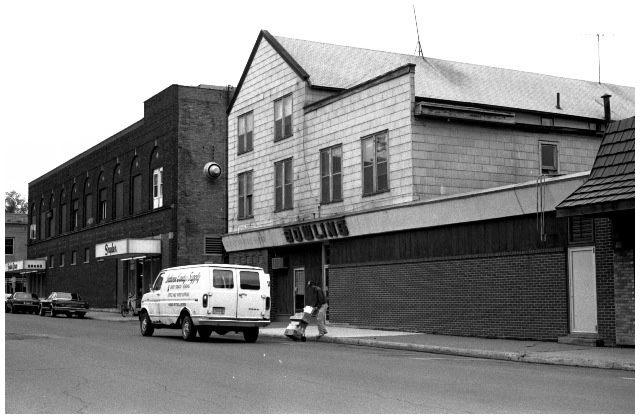


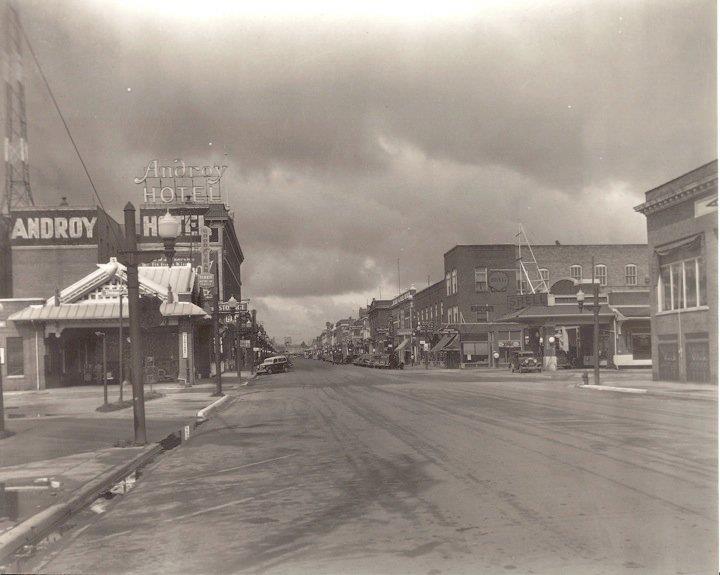



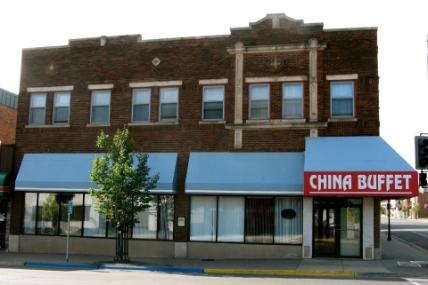



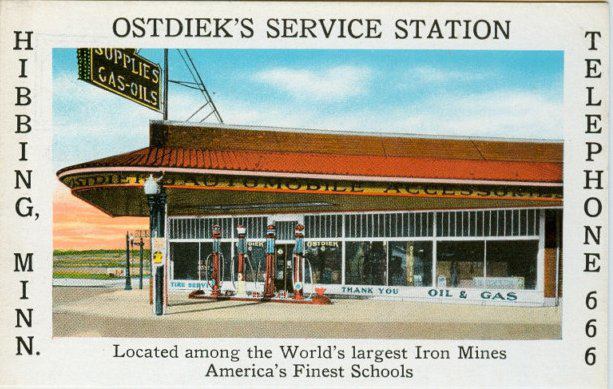

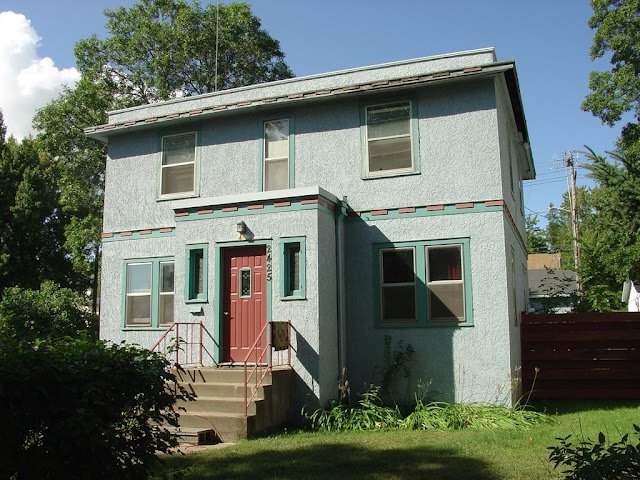





















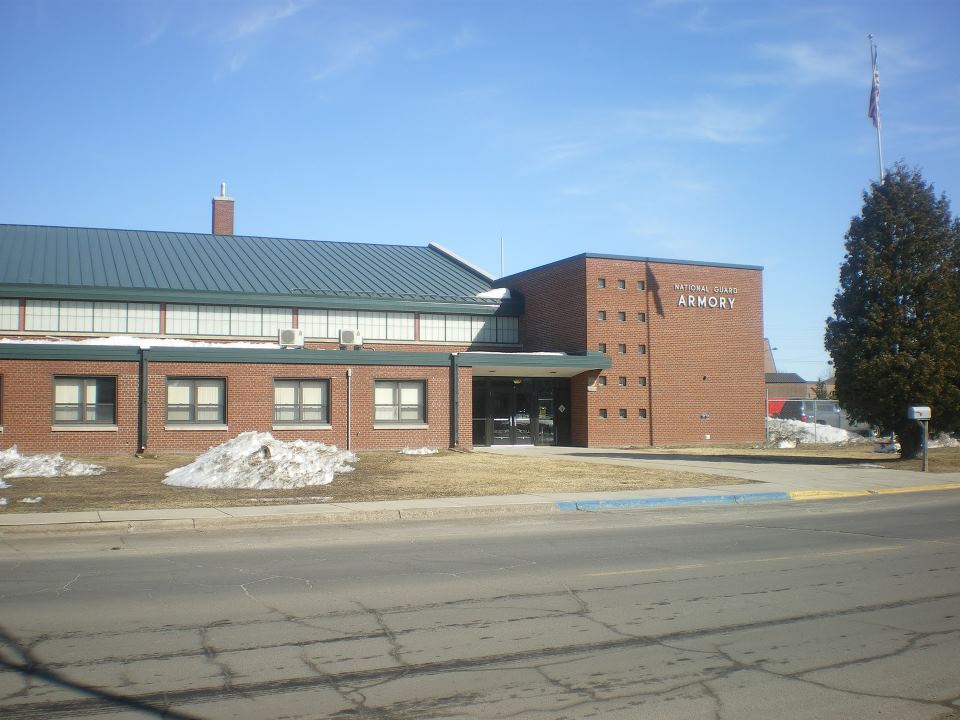 | Micka Electric Company1925 5th Avenue East, Hibbing, MN MN55746"Down that street, Fifth Avenue, is where Bob's uncle's shop is. Zimmerman's Furniture and Electric. They're finally going out of business, after almost twenty-five years. Bob's father used to make him do odd jobs around the shop. He and this other fellow sometimes would have to go out on a truck and repossess stuff. I think that's where Bob first started feeling sorry for poor people. These miners would come to town, find a house, buy furniture on the credit their job promised them, and then got laid off when a mind shut down. Then Bob and his friend would have to go over and take away all the stuff bought from Zimmerman's. Load it onto the truck and just leave. Bob hated that; used to dread it worse than anything." -- Echo Helstrom Zimmerman Furniture and Electric on Facebook
In 1941, Maurice and Paul Zimmerman purchased Micka Electric. Bob’s father, Abe, joined the company in 1947 and became the secretary/treasurer. As a teen, Bob worked in the store, making deliveries among other tasks.
1925 5th Avenue East, Hibbing, MN MN55746, formerly Micka Electric, when later it was a bowling alley.
1927 5th Avenue East, Hibbing MN 55746. Excel Business Systems has the address number 1927, but the original shop also took up the space of the parking lot on the right... Part of the Bowling Alley can be seen to the left.
The Androy Hotel Bob Zimmerman's Bar Mitzvah (בר מצוה) celebration at the age of 13 was at the Androy Hotel, 502 East Howard Street, Saturday 12 June 1954 (not Wednesday 22 May) with 400 guests. This was large for a Bar Mitzvah in Hibbing. Bob had prepared for his Torah and Haftorah readings with Reuben Maier, an Orthodox rabbi from Brooklyn. (He was close to Rabbi Menachem Mendel Schneerson a Hasidic rabbi and the seventh and last Rebbe of the Chabad-Lubavitch movement.) Bob and Reuben Maier studied in an apartment at 419 East Howard, right above the L&B Café, which had the best jukebox in town. The rabbi’s arrival in Hibbing was, according to a 1985 interview with Spin magazine, serendipitous. http://www.facebook.com/photo.php?fbid=124523907677230&set=a.112604275535860.9811.100003588642413 "[Hibbing] didn't have a rabbi," Bob recalls. "When it was time for me to be bar mitzvahed [sic], suddenly a rabbi showed up under strange circumstances for only a year. He and his wife got off the bus in the middle of winter. He was an old man from Brooklyn who had a white beard and wore a black hat and black clothes. They put him upstairs of the café, which was the local hangout. It was a rock ‘n’ roll café where I used to hang out too. I used to go up there every day to learn this stuff, either after school or after dinner. After studying with him an hour or so, I’d come down and boogie. The rabbi taught me what I had to learn and after he conducted the Bar Mitzvah, he just disappeared…. I never saw him again…. He came and went like a ghost.” In the same interview, Bob went on to say that he believed Rabbi Maier was forced out of the community because he was Orthodox, and too different from the more assimilated Jews of Hibbing. “Jews separate themselves like that. Orthodox, Conservative, Reform, as if God calls them that. Christians too. Baptists… Methodists, Calvinists. God has no respect for a person’s title. He don’t care what you call yourself.” The tone of his recollection may give a hint of what it was like to be a Jew in a town dominated by descendants of the great Scandinavian immigration about whom Garrison Keillor, that other American poet from Minnesota, so fondly spins tales. A teacher at Hibbing High told biographer Robert Shelton that while many barriers had been razed, some remained. “In Hibbing, the Finns hated the Bohemians and the Bohemians hated the Finns. Nearly everyone hated the Jews.” According to Shelton, one classmate said, “The kids used to tease Bob, sometimes. They would call him Bobby Zennerman because it was so difficult to pronounce Zimmerman. He didn’t like that…. His feelings could be hurt easily. Later in high school he wasn’t so well liked, mostly because he stayed to himself so much.” “All I did was write and sing…dissolve myself into situations where I was invisible,” Dylan said of his teenage years, when he hid away in his family’s attached garage with rock bands called The Shadow Blasters and The Golden Chords. Shelton connects this need for invisibility to the struggles of what he called alien assimilation. “The thirty or forty Jewish families of Hibbing still had to huddle together against the cold. Abe, who loved to play golf, couldn’t belong to the Mesaba Country Club.
The Androy Hotel is on the left. Note the serious radio mast, upper left of the photograph. WMFG had studios in the Androy Hotel. In June 1942 WMFG dropped CBS and joined the NBC Radio Network. It remained with NBC until the early 1960s. By 1962 it was an independent station. http://www.radio-locator.com/pats/WMFG_AM_CD.gif The Androy Hotel, downtown Hibbing, Minnesota opened June 29, 1921. The name Androy came from the first names of two of the owners - Andrew Doran and Roy Quigley. Built and designed by the Oliver Mining Company, closed in 1977 and restored in 1994, it was placed on the National Register of Historic Buildings on 13 June 1985. The Androy apartments are open to people ages 55 and older and on a limited income. The apartments are modern and spacious and the building offers many opportunities for the residents to get together.
Feldman's Department Store405 East Howard Street, Hibbing, MN 55746 Nancy Peterson (she once competed against Bob Zimmerman at a talent show and beat him) worked with Beatty Zimmerman. “She recalls the day in ‘62 or ‘63 when the owner made this announcement: “This is R. W. Feldman. We have a celebrity in woman’s wear—Mr. Bob Die-lynn.””
Feldman's Department Store had become Bender's Shoe & Sport in 2010 when this photograph was taken.
Feldman's Department Store Stone's Clothing103 East Howard Street, Hibbing, MN 55746 Run by Bob's grandmother Florence and his uncle Lewis. It became the China Buffet, pictured here in 2010. Ben Stone had met Florence Edelstein in Hibbing and they married in 1911 and set up an earlier store at Stevenson Location, twelve miles west of Hibbing, supplying clothing to iron ore miners’ families. When that mine was used up, they opened this store in downtown Hibbing instead. After Ben died Florence lived in the Zimmerman house when Bob and David were growing up. Florence is the grandmother much praised in Chronicles Volume One. "In 1995 in an Italian restaurant on New York City’s East Side two sisters were dining: Irene and Beatrice. “But everyone calls me ‘Beatty,’” said the sister wearing the more elaborate necklace. Irene wore a double strand of white pearls. It wasn’t until midway through our meal that “Beatty” revealed she was the former Beatrice Zimmerman, widow of Abe Zimmerman and mother of Robert Allen Zimmerman – otherwise known as Bob Dylan. We didn’t talk about Dylan, though. Beatty was far more excited about discussing her talented grandsons Jakob and Seth, and both sisters were more interested in talking about their own lives: their grandfather’s chain of movie theaters, the clothing store in Hibbing, Minnesota, owned by their parents Florence and Ben (“The customers were mostly miners and their families, so it wasn’t fancy,” Beatty said) and how Beatrice had been widowed twice, first by Abe, who died of a heart attack in 1968, and Joe Rutman, who died in 1985." -- Charles Ferruzza
The 1921 Trolley Station531 East Howard Street Hibbing, MN 55746 Became Shell Tire, Horn Auto Electric, and Furlong Gas Station which became Zimmy's Bar & Restaurant. The Trolley Station was driven out of business when buses proved more efficient. From the 1930s through the early 1980s, the former trolley building housed this gas station and tire shop. It was finally converted into a restaurant in 1982. Today the structure is home to Zimmy's a restaurant and bar that celebrates two things: Hibbing and Bob Zimmerman or Zimmy. Inside the walls are covered with memorabilia and old photos that tell the story of the area's history. The original brick archways and platform overhang remain in the restaurant space. Large glass windows occupy the space where entrance doors once opened for trolley cars. Read about Zimmy's Bar & Restaurant at their website.
Shell Tire, Horn Auto Electric, and Furlong Gas Station
Zimmy's Bar & Restaurant
Ostdiek's Service StationLocated among the World's largest Iron Mines
Zimmerman house2425 7th Avenue East, Hibbing, MN 55746, corner of 7th Ave East and 25th Street.
Zimmerman houseA two story, wood framed, flat roofed, stucco house and an example of the Mediterranean Modern style that could be found all over Hibbing in 1947. On the ground floor there was the kitchen, bathroom, dining and living room with a fireplace. Upstairs, a hallway connected three bedrooms. Bob Zimmerman lived in the house from 1948-1959. "In 1948 Abe moved his family to 2425 7th Avenue, Bob's primary childhood home. This was a two-story detached house two blocks from Hibbing High, where Bob and David enrolled, and a ten-minute walk from downtown where Abe worked." Sounes, Howard. Down the Highway: The Life of Bob Dylan. New York: Grove Press, 2001, page 37.
FireplaceWhile riding on a train goin’ west With half-damp eyes I stared to the room By the old wooden stove where our hats was hung With haunted hearts through the heat and cold As easy it was to tell black from white How many a year has passed and gone I wish, I wish, I wish in vain
Zimmerman house
Police dealing with teen crime in Hibbing in 1958Ed (Edward) Brigom, Dick (Richard) Frider, Denny (Dennis) Romano, Archie (Archibald) Passeri. http://idynamo.wordpress.com/tag/hibbing/
L & B Café417 East Howard Street, Hibbing, MN 55746. Bob and Echo would spend time at the L&B after school. They smoked cigarettes and played the juke box. Bob’s favorite order was cherry pie à la mode.
The L & B Café later became Gina's Fine Dining, 417 East Howard Street, Hibbing MN 55746.
Collier's Barbeque and Bar1928 East 4th Avenue, Hibbing Now a Chinese restaurant, the Hong Kong Kitchen. The Golden Chords jammed here on Sundays in late 1957 and early 1958. Bob's final Hibbing band, Elston Gunn and the Rock Boppers, performed here during the summer of 1958. Collier's Barbeque was a popular eatery and teen hangout.
Collier's Barbeque and Bar, 1928 East 4th Avenue, Hibbing, MN 55746.
Braman's Music208 East Howard Street, later Walkens Jewelry. Here Bob Dylan learned to play the guitar in the 1950's, taught by Raymond Blake.
Oh, the age of the inmates From the dirty old mess hall It's many a guard
I went down to scrub and rub Bob Mondavi's California Wine HouseMy first liquor store, Bob Mondavi's California Wine House, just behind Third Avenue. Bob proved way before my time that someone from Hibbing could get rich and famous in California! http://en.wikipedia.org/wiki/Robert_Mondavi
California Wine House, long shot.
Drive In Liquors!
Crippa Music313 East Howard Street, Hibbing, MN 55746 Crippa Music sold sheet music and vinyl records. During the noon hour and after school Bob was known to stop by Chet Crippa’s and charge sheet music and records to his father Abe’s account. "Gripped with a passion for music—particularly the blues—Bob wrote off for records he heard advertised on the radio. "Brother Gatemouth" Page sold records for Stan's Rockin' Record Shop in Shreveport, huckstering special $3.49 deals for six recordings. There was no way to buy this so-called race music in Hibbing as the assistant in Crippa's music store downtown had never heard of the artists Bob liked." "The saleslady at Crippa's explains that Bob doesn't sell well in Hibbing. People don't like his voice. Some of the other groups that do his songs -- the Byrds, Peter, Paul and Mary, Joan Baez -- they sell a whole lot better. But Saleslady likes Bob. She sold him his first harmonica. And harmonica rack. Had to order that special. Bob was in Crippa's a lot. From the time he was just a little boy. Always fascinated by music. Would spend hours in the store listening to records. All kinds. Liked classical music at first. But, sometime during his junior high school years, he got interested in popular music. Blues, country, rock and roll, everything. Chet Crippa remembers ordering all of Hank Williams' records for Bob, at one fell swoop. Chet outfitted Bob's rock band too. With amplifiers, mikes, guitars, right down to picks and guitar strings. Chet remembers that in those days Bob carried his guitar with him wherever he went. An old beat-up Sears and Roebuck job, with a leather strap. Slung it over his shoulder and down his back, through snowstorms and everything." "Bob in those tight jeans he wore, with his hands squeezed into the pockets as far as he could get them, and he'd drag me into Crippa's or one of the other stores that sold records. He'd walk up to the clerk like that in those jeans and with that kooky little grin, and ask for some records he KNEW they wouldn't have. The clerk would say, 'Little Who?' or 'Fats What?' and Bob would say, 'Well, how about such and such; or so and so's new one?' He'd keep that up until the clerk was just about furious, and then he'd put on his hurt look and we'd leave, ready to burst from not laughing." -- Echo Helstrom The other source for the music was the far more powerful, big-time radio stations you could pick up even in the North Country. Dylan’s early girlfriend Echo Helstrom remembers listening to DJ Gatemouth Page, beamed up from Shreveport, Louisiana, in 1957, and Dylan was buying blues and post-war R&B records he’d heard on the radio from the age of 13, according to Stan Lewis, the legendary Shreveport record-store owner, plugger and radio-show packager, recollecting this in 1996: ‘DJs like Wolfman Jack . . . had shows on other independent stations willing to work R&B into their formats. One of those clear-channel stations had a 250,000-watt transmitter in Mexico. On certain nights its signal could be heard all over the country, even in Europe and South America. I couldn’t believe some of the places I started getting orders from.’ One place was Hibbing, Minnesota. ‘He used to call me at night, to order the records he’d just heard on the air. I thought to myself, Who is this rich kid, calling long-distance from the Midwest to order records? We’d chat and talk about the blues . . .’ Fifteen miles from Hibbing, in the small town of Virginia, MN, there was a DJ on station WHLB called Jim Dandy (real name James Reese), and in the summer of 1957 Dylan and his friend John Bucklen went over to find ‘the man behind the voice’, as Robert Shelton puts it. Bucklen told Shelton that after they found him, they visited him often. ‘He was a Negro, involved with the blues. He had a lot of records we like.’ Dandy’s was the only black family in town, and on radio he used a ‘white’ voice, which he dropped when he saw that Dylan and Bucklen were keen on black music. They spent many visits listening to R&B and blues records. As Shelton comments: ‘Through Jim Dandy, Bob discovered a new Iron Range that his family scarcely knew. That is why Dylan could say: ‘‘Where I lived . . . there’s no poor section and there’s no rich section. . . . There’s no wrong side of the tracks . . .’’’
Crippa Music, 313 East Howard Street, Hibbing, MN 55746, became Jerry Erickson's Erickson's Music which then became Chuck Rupar's Rupar Music, which closed on 1 June 2012.
421 1/2 East Howard Street, Hibbing, MN 55746. The Moose Lodge had a piano and Bob Zimmerman made use of it.
Moose Lodge"See that lampost? Right in front of the Moose Lodge? That's where I first met Bob. Well, it was in the L& B afterwards really, but there on that corner was where I first noticed him. How could I help it! He was standing in the middle of the sidewalk, playing the guitar and singing, and it must have been ten o'clock at night. He and the band had been rehearsing upstairs in the Moose Lodge, and they were all going into the L&B. " -- Echo Helstrom
Close up detail of sign: P.A.P. Loyal Order of Moose Moose 1510. Purity Aid & Progress. Until May 1973 Moose Lodge membership had a racial requirement, it was open only to "male persons of the Caucasian or White race, who are of good moral character, physically and mentally normal, who shall profess a belief in a Supreme Being." (Moose Lodge No. 107 v. Irvis, 407 U.S. 163 (1972)) The Court found that the Moose Lodge was "a private social club in a private building" and thus not subject to the Equal Protection Clause.
Hibbing Memorial Building400 East 23rd Street The Golden Chords -- Bob Zimmerman, Monte Edwardson and Leroy Hoikkala -- played a talent contest at the Memorial Building on Saturday March 1, 1958. The piano and song group became Group II finalists in the afternoon preliminary round of the Hibbing Chamber of Commerce "Carnival Talent Contest", part of the 1958 Winter Frolic festivities. The evening competition didn't look too fierce, and Bob tells LeRoy, "We're gonna take 'em." Amidst shouts of "this is way too loud," and "hold 'er down," the band plays on obliviously during the finals. High schoolers in the audience thought the band had won, but judges give way to older more conventional thinking. A13-yr old pantomimist is declared the winner. An ecstatic Bob declares, "Hey, we really reached 'em. We knocked 'em dead." "“Bob was a little detached [after the contest] saying, ‘We should have won, you know?’ Because, in fact the audience was with us, but they gave it to someone else.” -- LeRoy Hoikkala Read more about the performance, and see pictures, on the Recreation and Music page.
The Little Theater, Memorial BuildingThe building also had a boxing ring and a lounge. Select Finalists In Frolic Talent Contest Finalists in the Hibbing Winter Carnival Talent Contest were selected at a preliminary contest in the Little Theater of Hibbing Memorial Building Thursday afternoon. The four top entries in the two groups will perform prior to the Winter Frolic Queen Coronation at 8 p.m. Thursday in the Little Theater. The winners Thursday were as follows: Group I, ages 11 and under - Glenda Zubich, leader, square dance group, consisting of James Gerow, Bill Giffin,Steven Zimmerman, Shirley Kirsling, Deporah Ylatapia, Judy Koski and Glenda Zubich; Georgine Sampson, dance, Suzanne Plesha, dance, and Linda Christ offerson, singing. Group II, ages 12 and over - Rosemary Pellicciotti, 13, Keewatin, acrobatic; Raymond Reed, 13, Hibbing. pantomime; Bob Zimmerman, Montie Edwardson and LeRoy Hoikkala, Hibbing, piano and song, and Stanley 14, and Jane Gruska, 11, Hibbing, tap dancer
The Memorial Building more recently.
National Guard Armory2310 Brooklyn Drive, Hibbing, MN 55746. For more about the Golden Chords one and only performance at this venue, see the Recreation and Music page.
|















| The New Victory Theatre2312 1st Ave, Hibbing, MN 55746 The Edelsten's first Hibbing theatre. It became Johnson TV Repair then in 2009 it was a Discount and Pawn Shop and then it became a warehouse.
The New Victory Theatre in March of 2012 as a warehouse, just before it was torn down.
The site after the building was gone... Next door is Tuffy's Bar & Grill 2314 1st Avenue, Hibbing, MN 55746. Burgers and Beer. It was not open for business at the time of this March 2012 photograph.
Linda Stroback tells us, " We saved the marquee letters from the Lybba Theatre, you can see them up on the wall at Zimmy's in Hibbing! They are lit & look excellent." 400 seats. The Lybba Theatre 2135 1st Avenue, Hibbing, MN 55746 was built in 1947. It closed in October of 1982. In 1984, the building was sold and it is now the home of the Sunrise Deli. The marquee is still used by the deli. The theater was owned by Max, Julius and Sam Edelstein. It was sold to Mann Theaters in 1976. The 350 car Hibbing Drive-In, 313 Mesabi Drive, Hibbing, MN 55746, opened in 1955 and was sold by the family in 1977. It closed in 1985. Julius died 29 December 1977. Max died 23 October 1994. The Lybba was named after Lybba Edelstein, wife of Hibbing’s pioneer showman, B. H. Edelstein. Lybba Edelstein’s daughter was Florence Edelstein Stone; Florence’s daughter is Beatty Stone Zimmerman, and Beatty’s son is Robert Allen Zimmerman. Bob's son, Jesse, has a charity called Lybba.
Lybba TheatreThe Lybba had a cry room, a room soundproofed for mothers and babies, but the film sound was played there and the film was visible through glass. It is said that Bob Zimmerman, who did not have to pay to see the films as his family owned the cinemas, also had access to the closed cry room for evening showings. A most private place to take a girl for a heavy date... ;-)
2135 1st Avenue, Hibbing, MN 55746 -- 17 October 2010. Sunrise Deli. Lybba. Master of the Quick Lunch. Delicatessen and Coffee Shop.
State Film Theater on a Hibbing winter's day!Photographer: Al Heitman Negative no. 22759
State Film Theater307 East Howard Street, Hibbing, MN 55746. 864 seats. Opened 1925. Bought from the Minnesota Amusement Company by Max, Julius and Sam Edelstein in 1964 and then sold to Marvin Mann in 1976. It was later torn down for the expansion of Merchants and Miners Bank, now the Andrew Mason Lees Building.
State Film Theater lobby"This is before the renovation. The renovation destroyed the opulence of the original. Because of the change to sound and wide screen they needed to make the screen larger. The State actually had a a real stage with a fly. They had Vaudeville shows there as well as films. There were dressing rooms downstairs that existed after the renovation. The floor at the State was wood and you could walk under the floor." Anyone else see a similarity to the High School?
East Howard Street. State Film Theater on the left. The State Film Theater in 1980 on the day it was demolished.
The State Film Theater much earlier...Vitaphone and Movietone -- Talking Pictures -- Talking Comedy and Vitaphone Vodvil Acts In 1925-26, film was technologically revolutionized with the formation of the Vitaphone Company (a subsidiary created by Warner Bros. and Western Electric). Warner Bros. launched sound and talking pictures, with Bell Telephone Laboratory researchers, by developing a revolutionary synchronized sound system called Vitaphone (a short-lived sound-on-disc process developed in 1925 that quickly became obsolete by 1931). This process allowed sound to be recorded on a phonograph record that was electronically linked and synchronized with the film projector. In 1926, William Fox of the Fox Film Corporation responded to Warners' success with its own similar and competing, advanced Movietone system - the first commercially successful sound-on-film process developed in conjunction with General Electric. It added a 'soundtrack' directly onto the strip of film and would eventually become the predominant sound technology. The other major film studios (Paramount, Loew's, First National and UA) realized the expensive and challenging ramifications of the sound revolution that was dawning, and that talkie films would be the wave of the future. In May 1928, to avoid an inevitable patent war, they signed an agreement with Western Electric to analyze the competing sound systems within the next year and jointly choose a single, standardized sound system.
The Gopher Film Theater116 East Howard Street, Hibbing, MN 55746. An Edelstein theatre from 1925-1928. 434 seats. It was originally called the Garden Theater.
The Gopher Film Theatre, detail of the stage.
Homer Film TheaterOpened 1925. Edelstein owned from 1945.
|

| Hibbing Drive-In TheaterThe 350 car Hibbing Drive-in Theater, 313 Mesabi Drive, Hibbing, MN 55746, opened in 1955 and was sold by the family in 1977. It closed in 1985 but was still shown on maps of 1992. http://msrmaps.com/image.aspx?T=1&S=10&Z=15&X=2546&Y=26244&W=1
|

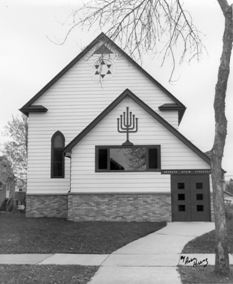


|
|




| Gust and Amelia Maki grave, 1905.Maki is a Finnish surname meaning "hill". A grove is a group of Druids which has been established, and has a third order Druid as its Arch-Druid. The Maki's were in Hickory Grove Number 45.
Hickory Grove No 45
Eye of Horus
Bob Dylan falcon eye symbol.The Eye of Horus is an ancient Egyptian symbol of protection, royal power and good health. Horus is the ancient Egyptian sky god usually depicted as a falcon. His right eye was associated with the sun Ra. The eye symbol represents the marking around the eye of the falcon, including the "teardrop" marking sometimes found below the eye. http://upload.wikimedia.org/wikipedia/commons/9/99/Peregrine_Falcon_head_shot.jpg The teardrop, the dark streak of feathers beneath the falcon's eye, is called a malar (cheek) stripe. The biological theory for this feature is that, much like athletes putting blacking under their eyes to prevent glare, this also prevents glare from reflecting off their feathers.
|


| The infamous Hibbing breasts which could be seen from outer space!
Destruction of the Hibbing breastsi.e. the pioneering sewage works, the Hibbing Disposal Plant. Hibbing Waste Treatment Plant One of America's earliest recipients of Zeiss-Dywidag thin-shell domes was Hibbing, work began on a $439,946.00 sewage treatment plant for the community in 1938. This architectural milestone was put on the National Register of Historic Places in 1991. Hibbing eventually tore it down... National Register of Historic Places on August 9, 1991 Gardner, Denis. Minnesota Treasures: Stories Behind the State's Historic Places. St. Paul, MN: Minnesota Historical Society Press, 2004, 0873514718, page 101 ff. (Section 4: Industry and Technology -- Hibbing Disposal Plant)
|



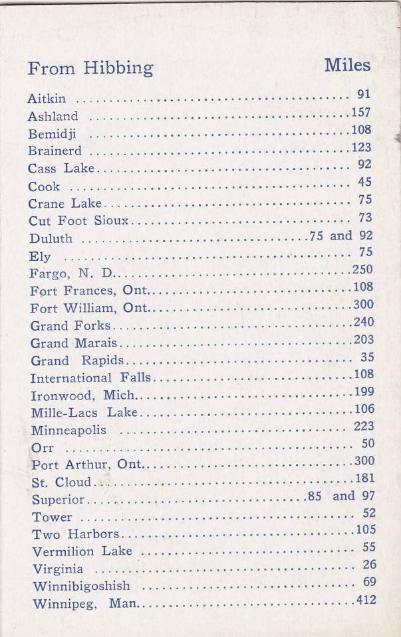

| Sam Perella moved his small café to 107 East Howard in Hibbing in 1954, and Sammy’s Pizza was born.
1958 Hibbing Auto Show
Mack Clothing, Hotel Hibbing and its Café on fire?No. "At first, it appeared to be happening at the Hotel Hibbing. The fire chief and some of his men came out to investigate reports of smoke at the hotel. But it turned out that the fire was at the Healy Theatre, which was located at the rear of the hotel. The theater was demolished, and the hotel survived - this time. It would be doomed by another fire a few years later. The story of the Healy Theatre fire was told by the Mesaba Ore in its issue of Saturday, Jan. 13, 1912: The Healy theatre, located at the rear of the Hotel Hibbing, on Cedar Street, was completely destroyed by fire at 1 o'clock this morning. The origin is not known, but it is thought to have been of incendiary nature, as no one connected with the establishment had been inside of it all day yesterday. The building, which cost in the neighborhood of forty thousand dollars, is a total loss. It was the property of Representative John A. Healy, also proprietor of the Hotel Hibbing, which had a narrow escape from going the way of the theatre. At about twelve o'clock last night smoke was detected in the lobby of the Hotel Hibbing. A silent alarm was sent to the fire department, and Chief McIllhargy and several men went to the hotel immediately, where a thorough search was made of that building, but for a time they were unable to locate the fire. At 1 o'clock however, it was learned that the smoke was issuing from the Healy theatre. An alarm was sent to the departments, both of which answered. The firemen fought to confine the fire to the rear of the building, where it had evidently got its start, but it had gained too great a headway, and before long the entire roof was ablaze. The guests and occupants of the Hotel Hibbing building began at once to remove their belongings to the street, as it looked as though that building was doomed to go with the theatre. For a time all hope for the hotel building was given up by the spectators, but the firemen put forth every effort to confine the fire to the theatre, and with the help of the fire wall nearest the hotel building their efforts were successful. A great deal of the fixtures and furniture of the hotel was removed in anticipation of the destruction of that building, and many people living in buildings north of the burning theatre had moved their belongings out onto the sidewalk, expecting that if the fire communicated to the hotel building all of the north end of the town would be destroyed. By 3-30 o'clock the firemen had the fire well under control, and in another half hour all danger to surrounding buildings was over. Mr. Healy carried about twenty-five thousand dollars insurance on the demolished structure. He had just recently leased it to Messrs. H. Seigel, of Virginia, and L.F. Allerdt, of Chicago, on a five-year lease. The house was to have been open to vaudeville on February 1. The Healy house was opened in the winter of 1909, and has always been a favorite with Hibbing theatre-goers. It was finished nicely inside, and the exterior, which was of fireproof brick, put up a splendid appearance. Jack Lynch can be reached at: jlynch@hibbingdailytribune.net
Miles From HibbingWinnipeg 412, Minneapolis 223, Duluth 75 ... On January 31, 1959, during his senior year in high school, Bob made a trip to Duluth to see Buddy Holly, the Big Bopper, Ritchie Valens and Dion & the Belmonts. Two nights later, the three headliners gave their final show in Clear Lake, Iowa, and died in a plane crash. The "Day the Music Died" marked the symbolic end of rock's innocence, and the Duluth concert was a star-crossed meeting of rock's two first eras. Bob recalled the the concert, and making eye contact with Buddy Holly, in his 1998 Grammy acceptance speech.
Hibbing, MinnesotaBob Dylan: ‘it’s where I was raised an went t school . . . my youth was spent wildly among the snowy hills an sky blue lakes, willow fields an abandoned open pit mines. contrary t rumors, I am very proud of where I’m from . . .’ Hibbing is the least populous and the most important place in Bob’s Minnesota past. Up from St. Paul, old highway 65 is snowy by November. Flat, frozen fields, Dutch-roof barns, loblolly pines and stripped silver birch trees, Lutheran churches, dilapidated fencing, pick-up trucks more frequent than cars. A timeless scenery of telegraph poles and roadside mailboxes, the aluminium-grey road stretching out flat ahead; signs for Jumbo Leeches and Flathead Worms, snowmobiles for sale, ‘Meat Raffle every Saturday’. A hundred miles north of St. Paul you pass through McGrath, pop. 62, with its Catholic Church, Calvary Presbyterian Church and Pliny Graveyard. Then trailer-homes and more white clapboard than before, more and more picturesque old barns, grain-elevators like cocktail shakers. The closer you come to the Iron Range towns, the narrower and emptier the road grows, and the taller the trees, and the more the banks of snow press in from the verges. The whole hushed place turns into Winter Wonderland, and cocooned inside it, Hibbing shines and twinkles like the set for an old Perry Como Christmas Special. It would have been in Canada but for a mistake on an historic map. Deep in snow but easy to move around in, it epitomises pleasant, old-fashioned small-town life. It’s not such a small town, either. At 186 square miles, its grid of leafy, spacious streets is the state’s largest by area. The people are exceptionally equable, and make you welcome. It almost makes you wonder why Bob ever left. He lived here from the age of six. To begin with, he slept on the floor in Grandma Florence’s house; later, in the front room at 2425 7th Avenue East, his boyhood home, Bob practised in his first and nameless beat group, survived his Bar Mitzvah party and stared out of the window dreaming of escape. It was a mere couple of blocks’ walk to Hibbing High School. And what a school. You’d never know it from anything Bob’s let slip, but iron ore built Hibbing a school of palatial grandeur that cost four million dollars in 1920–23, with a sanitised medieval castle exterior in brick and Indiana limestone, hand-moulded ceilings, a 75-foot-long oil painting in the library, marble steps with solid brass handrails and, in the 1,825-seater auditorium, six Belgian crystal chandeliers now worth a quarter of a million each and a stage that can hold the Minnesota Symphony Orchestra. In 1958, with his second group, the Golden Chords, Dylan stood hammering on Hibbing High School’s 1922 Steinway Grand piano (breaking a pedal in the process) and shouting out rock’n’roll songs at the annual student concert . . . and got laughed at, up there on stage in an auditorium so lavish and ornate, and with such acoustic excellence, that it justifies Stephen Scobie’s point that ‘Every stage Bob Dylan has played on for the past thirty years has been, after Hibbing High School Auditorium, an anticlimax.’ Bob Dylan: ‘A train line cuts the ground / showin’ where the fathers an’ mothers / of me an’ my friends had picked / up an’ moved from / north Hibbing / t’south Hibbing. / old north Hibbing . . . deserted / already dead / with its old stone courthouse / decayin’ in the wind . . .’ Bobby often explored North Hibbing’s ghosttown, where everyone lived before they moved them two miles south to dig out the ore they were sitting on. The whole place is just snow-covered ground, close to the edge of the vast, vast hole far down below, filled like a lake of iron-brown water. This is the world’s largest open pit mine: ‘the biggest hole dug by man’ on the planet, as Hibbing loves to boast. ‘Hibbing’s got schools, churches, grocery stores an’ a jail . . . high school football games and a movie house . . . corner bars with polka bands. . . . Hibbing’s a good ol’ town.’ Bob’s mixed feelings about Hibbing are expressed perfectly in that one last line from ‘My Life in a Stolen Moment’, and he and it have had a difficult relationship ever since he left. In consequence, to the soul’s delight and the professional eye’s puzzlement, there is no exploitation of Dylan’s incandescent name by the Heritage Industry. Until the last two or three years, Bob Dylan remained conspicuously absent from Minnesota tourism bumph. Now there is an annual series of low-key events called ‘Dylan Days’, and the street he lived on has been renamed Dylan Drive (though East 7th Avenue still remains the official postal address). Hibbing’s 1990s coffee-table puffery ‘On the Move Since 1893’ managed only this: ‘Some contemporary well-known natives include Rudy Perpich; Kevin McHale; Jeno Paulucci, founder of Jeno’s Pizza; Bob Dylan, folk musician, songwriter; Roger Maris and Vincent Bugliosi, Charles Manson Trial prosecutor’. Thirty-five miles away, the Judy Garland Museum welcomes you to the Garland Birthplace Historic Home, Grand Rapids (‘It’s a swell state, Minnesota. . . . We lived in a white house with a garden. It’s a beautiful, beautiful town’, says Judy on the brochure in the Minnesota tourism press-pack); in Duluth, Dylan’s birthplace home is disregarded; in Hibbing, the many pilgrims who come to the 7th Avenue house must simply decide whether to ring the bell and disturb the present owner or not. When the Zimmerman house went on sale in 1989, the realtor had enquiries from all over the Dylan-fan world, and thought he’d make his fortune. This came to nothing, and Greg French paid $45,000 for the flat-roofed, two-storey 1940s property in Mediterranean Moderne style, not because it was Dylan’s but because it was the best bargain in the neighbourhood at the time. Once, a state tourism ‘PR specialist’ called, to ask Greg if he’d consider doing B&B. That was their big idea for the boyhood home of one of the 20th century’s greatest artists. Meanwhile downtown there’s only the bar-cafe called Zimmy’s to cater to the swell of Dylan-visitors, a swell that cannot but increase. Those who actually knew him in the past—ex-classmates like Larry Furlong and Margaret Toivola—feel neither spurned nor uncomprehending of Dylan’s quantum- leap away. More importantly, Dylan has written beautifully in poetry and song about these places and their wintry magic. In interviews too, he has often re-affirmed his pride in his formative Iron Range, North Country roots: ‘I’m that color. I speak that way. . . . My brains and feelings have come from there. . . . The earth there is unusual, filled with ore. . . . There’s a magnetic attraction there: maybe thousands of years ago some planet bumped into the land there. There is a great spiritual quality throughout the mid-West. Very subtle, very strong, and that is where I grew up’. Gray, Michael. The Bob Dylan Encyclopedia. New York: Continuum, 2006, 0826469337, page 312-313.
|

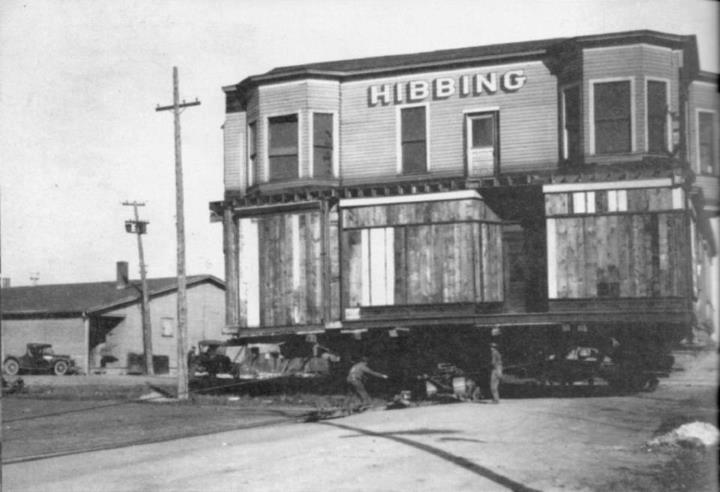








| The State Film TheaterSeen from outside. Now Showing 'Cimarron' Richard Dix in Edna Ferber's Colossal 'Cimarron' Astounding Edna Ferber's Cimarron with Richard Dix. The full official tag line for this film was "Edna Ferber's Mighty Novel Becomes The Towering Colossus Of The Films!" Note the name three times in letters in the air on wires!
Moving the Hibbing Hotel from North Hibbing to South Hibbing, 1921.
Homer Bar or Homer Tavern2213 1st Avenue, Hibbing, MN 55746.
Frank Hibbing statueHibbing, Minnesota.
Frank Hibbing statue years later...
Bob's A&W, now The Stand."Bob and I loved to eat hot dogs ... like we used to get out on the road to my house. At the A&W Root Beer stand. He'd always make me buy him hot dogs. With mustard and relish. He'd say, 'Please Echo, please, I'm STARVING' and we'd have to stop. He never seemed to have any money. So *I* usually bought the hot dogs. He'd give me a bite." The plastic A&W sign is still visible behind The Stand's sign. This surviving root beer stand is to the northeast of Hibbing. The one Echo mentions is probably a demolished one which was on the south side of West 41st Street (Highway 169 & Highway73), opposite the Dairy Queen.
The Highway 169 A & W Root Beer Stand advertised in the Hibbing Hi-Times 22 May 1959.Pealing cars are not old paint jobs but cars driving away fast so the tyres leave black marks on the tarmac like a professional dragster. A good peal-out involves black marks on the road surface and white smoke coming from the tyres. Instructions: 1 Push the clutch all the way down with your left foot while the car is completely stopped. 2 Place your left hand on the steering wheel, and keep your right hand locked on the gear shift, ready to change gears quickly. 3 Keep your left foot pressed on the clutch, move your right foot over the accelerator and with your right hand move the gear shift to first gear. 4 Slam the accelerator pedal all the way down with your right foot and hold your right foot in that position. Remove your left foot from the clutch just an instant after pressing the accelerator pedal and listen as the car starts screeching loudly and the tyres kick up clouds of white smoke. 5 Shift into second gear with your right hand just as your car's RPM meter nears its upper limit and your car will release for a loud and impressive peel out! You will probably also have spilled your root beer, though... ;-)
Sportsmen's Café509 East Howard Street, Hibbing, MN 55746 Echo Helstrom and Bob would sometimes go to the Sportsmen's Café and have pizza burgers. Still found on menus in Minnesota: regular burger with pizza sauce, pepperoni and mozzarella cheese. Sample menu.
Sportsmen's Restaurant & Taverna
Detail of Sportsmen's Café sign.
|

| The Gopher Film TheatreWhen it was still called The Garden.
|

| 1114 12th Ave East, Hibbing, MN 55746This is the main Edelstein house, where B.H. and Lybba Edelstein lived. The position is remarkable, as near to the edge of the huge open pit mine as anyone would want. The views from the back of the house are presumably spectacular. And who could not find a two storey porch stylish!
|

| Linda Stroback tells us, " We saved the marquee letters from the Lybba Theatre, you can see them up on the wall at Zimmy's in Hibbing! They are lit & look excellent." -- photograph courtesy of Jackie Chambers Rudnick 20120524
|
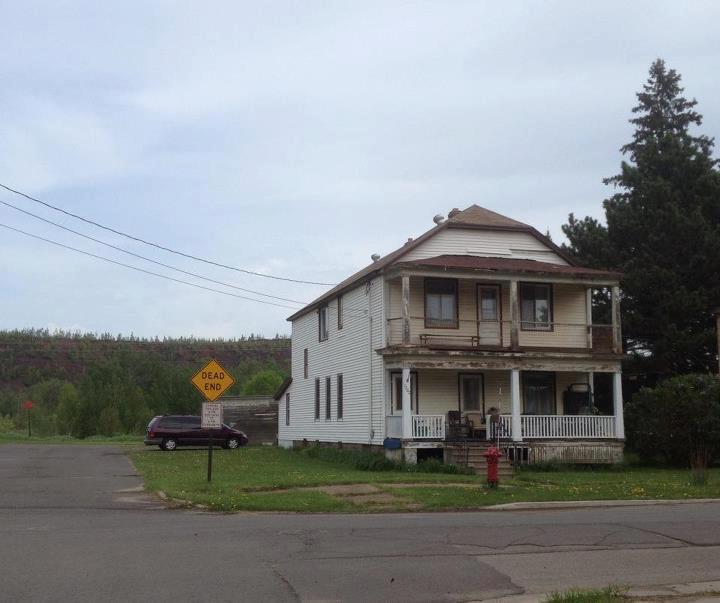
| The main Edelstein house in May 2012."My family settled in Hibbing I think in about ’46 or ’47. My father had polio when I was very young. There was a big epidemic. He lost his job in Duluth and we moved to the Iron Range and moved in with my grandmother Florence and my grandfather. … We slept in the living room of my grandmother’s house for about a year or two, I slept on a roll-away bed, that’s all I remember. … This was not a rich or poor town, everybody had pretty much the same thing and the very wealthy people didn’t live there, they were the ones who owned the mines and they lived thousands of miles away." -- interview with Cameron Crowe, Biograph booklet -- photograph courtesy of Jackie Chambers Rudnick 20120524
|
 | The L & B Café, 417 East Howard Street, Hibbing MN 55746 after it became Red Rock Capital Advisors. -- photograph courtesy of Jackie Chambers Rudnick 20120524 |
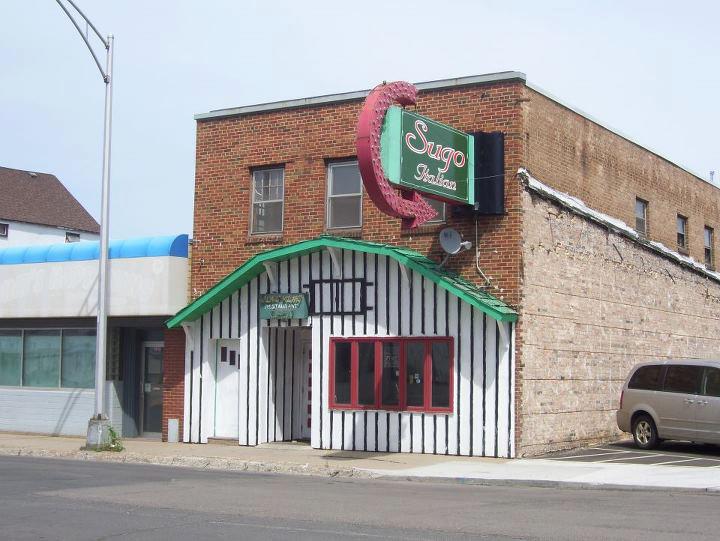 | Collier's Barbeque and Bar, 1928 East 4th Avenue, Hibbing, MN 55746 became the Sugo Italian Restaurant. -- photograph courtesy of Jackie Chambers Rudnick 20120524 |